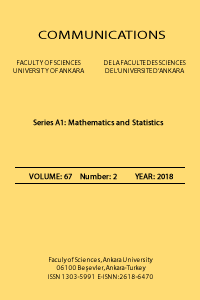ESTIMATION OF TIME VARYING PARAMETERS IN AN OPTIMAL CONTROL PROBLEM
In this paper, we employ a non-linear state space model and the extended Kalman filter to simultaneously estimate the time-varying parameters in an optimal control problem, where the objective (loss) function is quadratic. Our methodology also allows us to derive the difference between the optimal control and the observed control variable. A simulation exercise based on a simple intertemporal model shows that the estimated parameter values are very close to their population values, which provide further support for the estimation methodology introduced in this paper
Keywords:
Non-linear state space models Extended Kalman filter, Optimal linear regulator 1Ozlale (2003) and Salemi (1995) are some of the exceptions in this context,
___
- Anderson, B.D.O. and J.B. Moore (1979), “Optimal Filtering”, Prentice Hall, 1979.
- Bacchetta, P., Gerlach, S.(1997). “Consumption and credit constraints:international evidence”, Journal of Monetary Economics, 40, 207-238.
- Favero, C. A, Rovelli, R.(2003), “Modeling and Identifying central bank preferences ”, Journal of Money , Credit and Banking, 35, 545-556.
- Grillenzoni C.(1993), “ARIMA Processes with ARIMA parameters”, Journal of Business and Economic Statistics, 11, 235-250.
- Kalman, R. E. (1960), “A new Approach to Linear Filtering and Prediction Problems”, Journal of Basic Engineering, Vol. 82; 35-45.
- Ljungqvist, L, H. Lustig, R. Manvelli, T.J. Sargent, S.V. Nievwerburgh, (2001), “Exercises in Recursive Macroeconomic Theory”, unpublished manuscript, Stanford University, Hoover Institution.
- Ljungqvist, L and T.J. Sargent (2000), “Recursive Macroeconomic Theory”, The MIT Press, Cambridge, MA.
- Ljung, L and T. Söderström (1985), “Theory and Practice of Recursive Identification”, The MIT Press, Cambridge, MA.
- Özbek, L. and M. Efe (2004), “An adaptive extended Kalman filter with application to compartment models”, Communication in Statistics, Simulation and Computation, 33:145- 158.
- Özlale, Ü. (2003), “Price Stability US Output Stability: tales of federal reserve administrations, Journal of Economic Dynamics and Control”, 27,1595-1610.
- Özbek, L., Özlale, Ü.(2005), “Employing the extended Kalman Filter in measuring the output gap, Journal of Economic Dynamics and Control”, 29, 1611-1622.
- Salemi, M. (1995), “Revealed preference of the federal reserve: using inverse control theory to interpret the policy equation of a vector autoregression, journal of business and economic statistics”, 13, 419-433.
- ISSN: 1303-5991
- Yayın Aralığı: Yılda 4 Sayı
- Başlangıç: 1948
- Yayıncı: Ankara Üniversitesi
